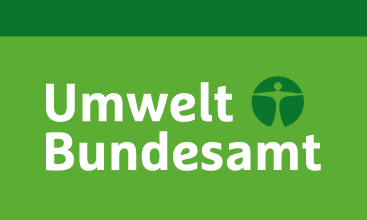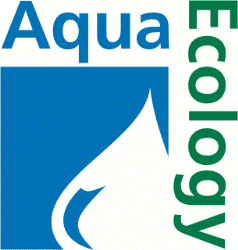
A screenshot of the mybiOSis environment that shows several applications built for the UBA project. This image was published in the PESI legacy paper (https://www.researchgate.net/publication/282248223_PESI_-_a_taxonomic_backbone_for_Europe).
The most important impacts and effects, particularly those of anthropogenic origin, on the environmental state of the targeted waters will be analysed. The status of the marine environment will be defined by 11‘descriptors’, which cover certain aspects of the environmental status and are defined in the MSFD:
- Biological diversity is maintained. The quality and occurrence of habitats and the distribution and abundance of species are in line with prevailing physiographic, geographic and climatic conditions.
- Non-indigenous species introduced by human activities are at levels that do not adversely alter the ecosystems.
- Populations of all commercially exploited fish and shellfish are within safe biological limits, exhibiting a population age and size distribution that is indicative of a healthy stock.
- All elements of the marine food webs, to the extent that they are known, occur at normal abundance and diversity and levels capable of ensuring the long-term abundance of the species and the retention of their full reproductive capacity.
- Human-induced eutrophication is minimised, especially adverse effects thereof, such as losses in biodiversity, ecosystem degradation, harmful algae blooms and oxygen deficiency in bottom waters.
- Sea-floor integrity is at a level that ensures that the structure and functions of the ecosystems are safeguarded and benthic ecosystems, in particular, are not adversely affected.
- Permanent alteration of hydrographical conditions does not adversely affect marine ecosystems.
- Concentrations of contaminants are at levels not giving rise to pollution effects.
- Contaminants in fish and other seafood for human consumption do not exceed levels established by Community legislation or other relevant standards.
- Properties and quantities of marine litter do not cause harm to the coastal and marine environment.
- Introduction of energy, including underwater noise, is at levels that do not adversely affect the marine environment.
Qualitative and quantitative aspects of the different impacts as well as detectable trends should be covered. Furthermore, the cumulative and synergetic effects on the marine environment will have to be considered. The German Federal Environment Agency (UBA) founded a project to develop a concept for an overall integrating cumulative effects assessment system in order to effectively ensure the accomplishment of the future assessment requirements.
Cumulative effects comprise ‘indirect impacts, which are not a direct result of the project, often produced away from or as a result of a complex pathway’, ‘impacts that result from incremental changes caused by other past, present or reasonably foreseeable actions together with the project’, and ‘impact interactions between impacts (whether between the impacts of just one project or between the impacts of other projects in the areas)’ (European Commission 1999). Moreover, cumulative effects from a spatial and temporal perspective, which might increase the magnitude of an effect will be analysed as well. This is for example the case if many pressures accumulate in a certain area (‘space crowding’ ) or if pressures appear in short time intervals (‘time crowding’) (Siedentop 2005).
Due to the huge amount of different effects, species specific differences in responses to the anthropogenic pressures and the variety of interactions between different stressors, this is a challenging task and requires a sophisticated system for literature organisation and data management.


For the UBA UFOPLAN MSRL project, myNature Association has a close long-term co-operation with AquaEcology GmbH & Co. KG. AquaEcology is a German company that offers analytical and supportive services all around the aquatic ecology. They conduct intensive and often long-lasting monitoring programmes in the aquatic environment and use the analytical and advisory capacity.
For UBA UFOPLAN MSRL within our online mybiOSis environment (https://kladia.info/mynature/blog.php?docid=27) we have developed LiACAT - Literature based Analysis and Cumulative Assessment Tool (https://kladia.info/db/e-references/6-5_user_manual_LiACAT_tool.pdf). LiACAT is an online tool facilitating sorting, filtering and analysing selected literature data. It can handle complex relationships: interaction effects can be visualised effectively and different data analyses will be possible in the near future. Traceability back to the literature source is possible from any process step, which allows a very high transparency. To the original mybiOSis modules dedicated to literature management we have added specific management functions that are relevant to UBA and not only (importing citation files, tagging references based on various classification schemes, organizing assessment data in classes based on information from references, digitization of data from graphs etc.). One distinct application developed for this task is litMan (literature manager) which can be used for inspecting summaries of published references and their descriptors. Collections of references that belong to a project may be gathered in litMan. To each bibliographic reference it is possible to add unlimited descriptors. References may be filtered, ordered, and exported based on bibliographic information as well as based on descriptor information. We have integrated WebPlotDigitizer within the mybiOSis environment so that data from graphs published in references may be extracted in datasets and stored in database. Another LiACAT related application within the mybiOSis environment is Sheets. This application allows organizing datasets of information harvested from literature. It is possible to combine two or more datasets in the same sheet and decide on what data and in what order the columns would be displayed in sheet. Data could be exported as well.
LiACAT includes the Assessment Toolkit that consists of a series of interconnected modules that could be used for assessments. In Assessment Toolkit so-called ‘scenes’ can be created. This means that all the literature collected for a certain project could be filtered for certain aspects defined in the a classification tree structure and the corresponding tags, the species of interest and the relationships/ relationship groups of interest. The linkages between the different environs as well as some information about the relationships can be visualised in a Sankey diagram showing the pathways associated with certain selected effects. The visualisation will support the user in getting a better understanding of the system. Two matrix modules allow users to process assessments; these modules work by combining information from scientific literature, station data for environmental parameters and user input. Assessment Toolkit is able to produce standard GIS files with the results of assessments.
The tools might be used later on also for other kinds of research questions related to any kind of cumulative effects and study systems.